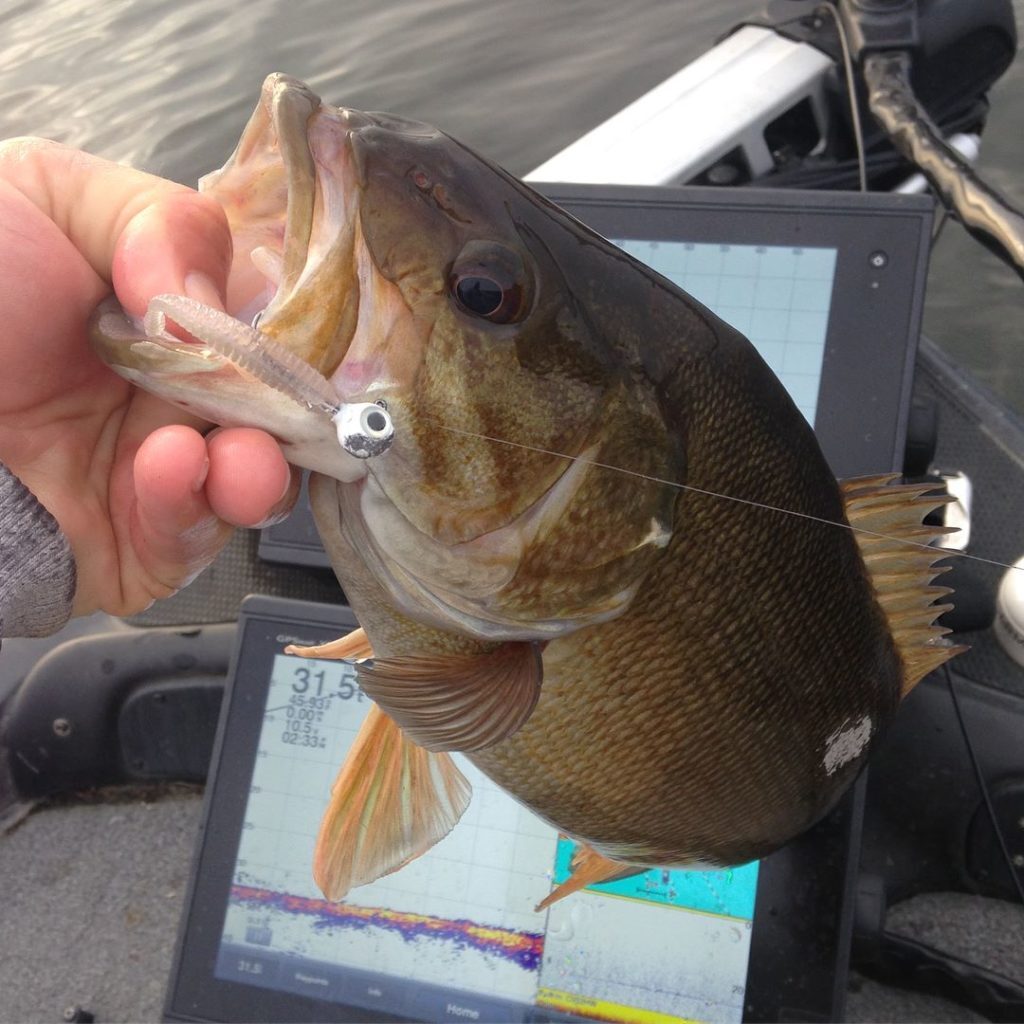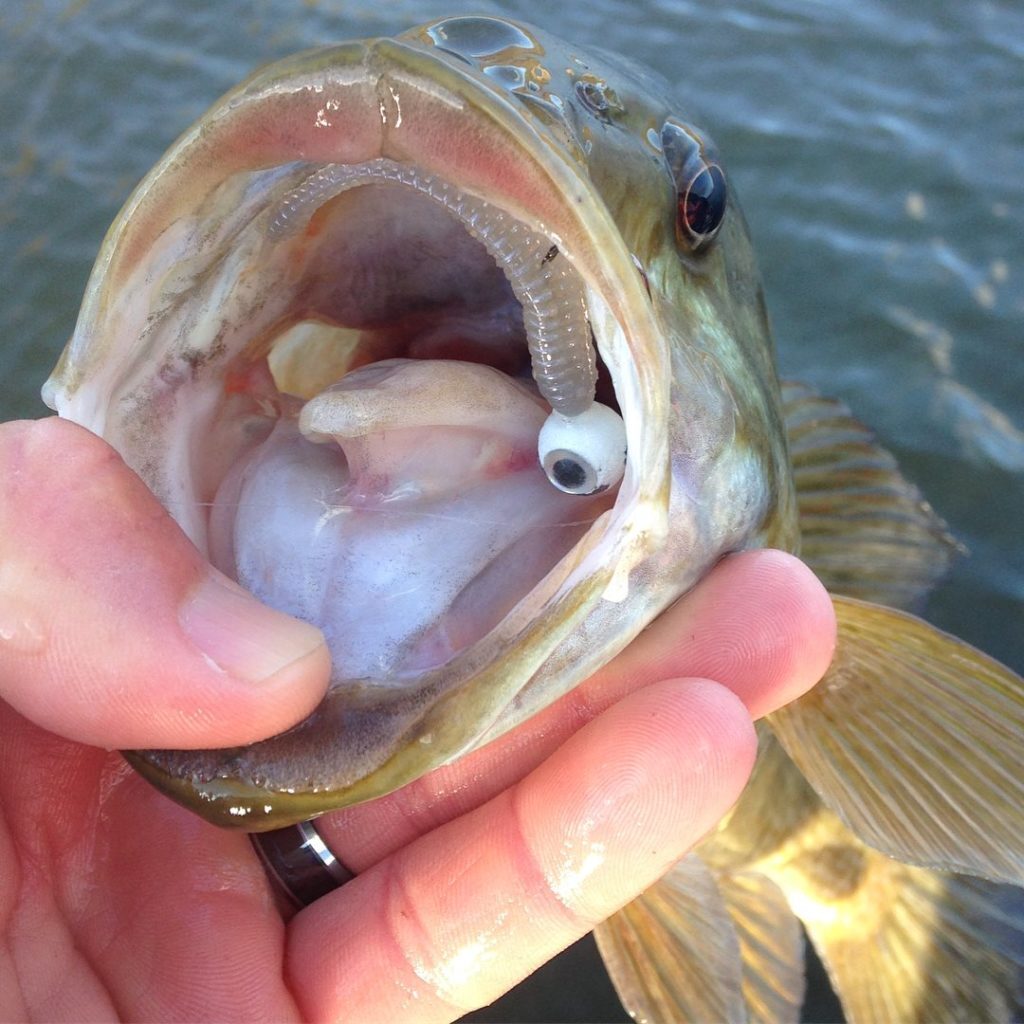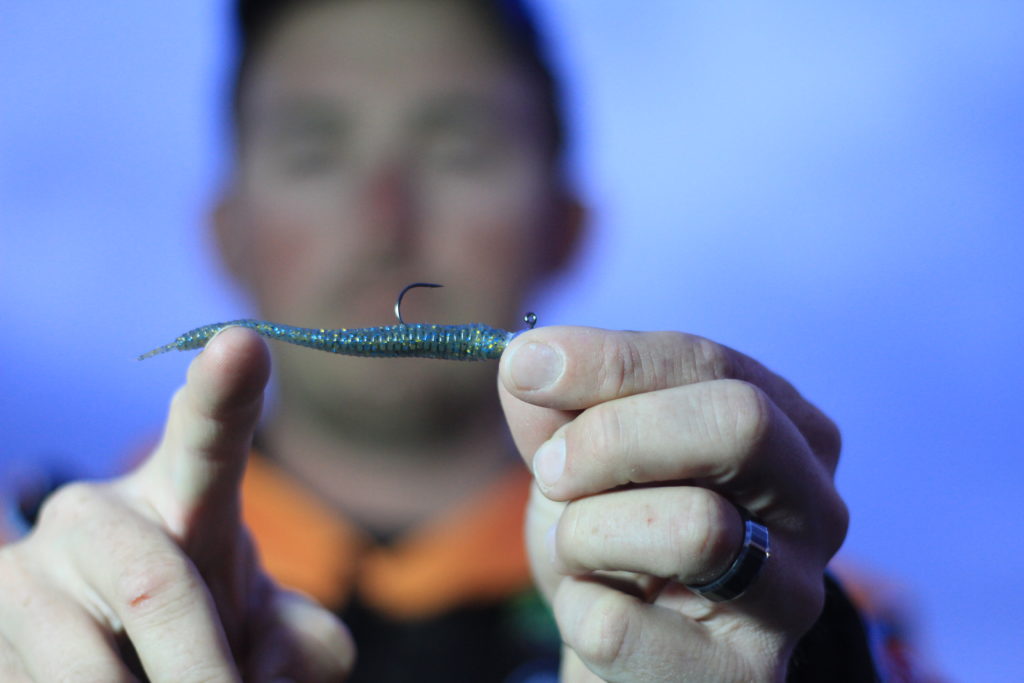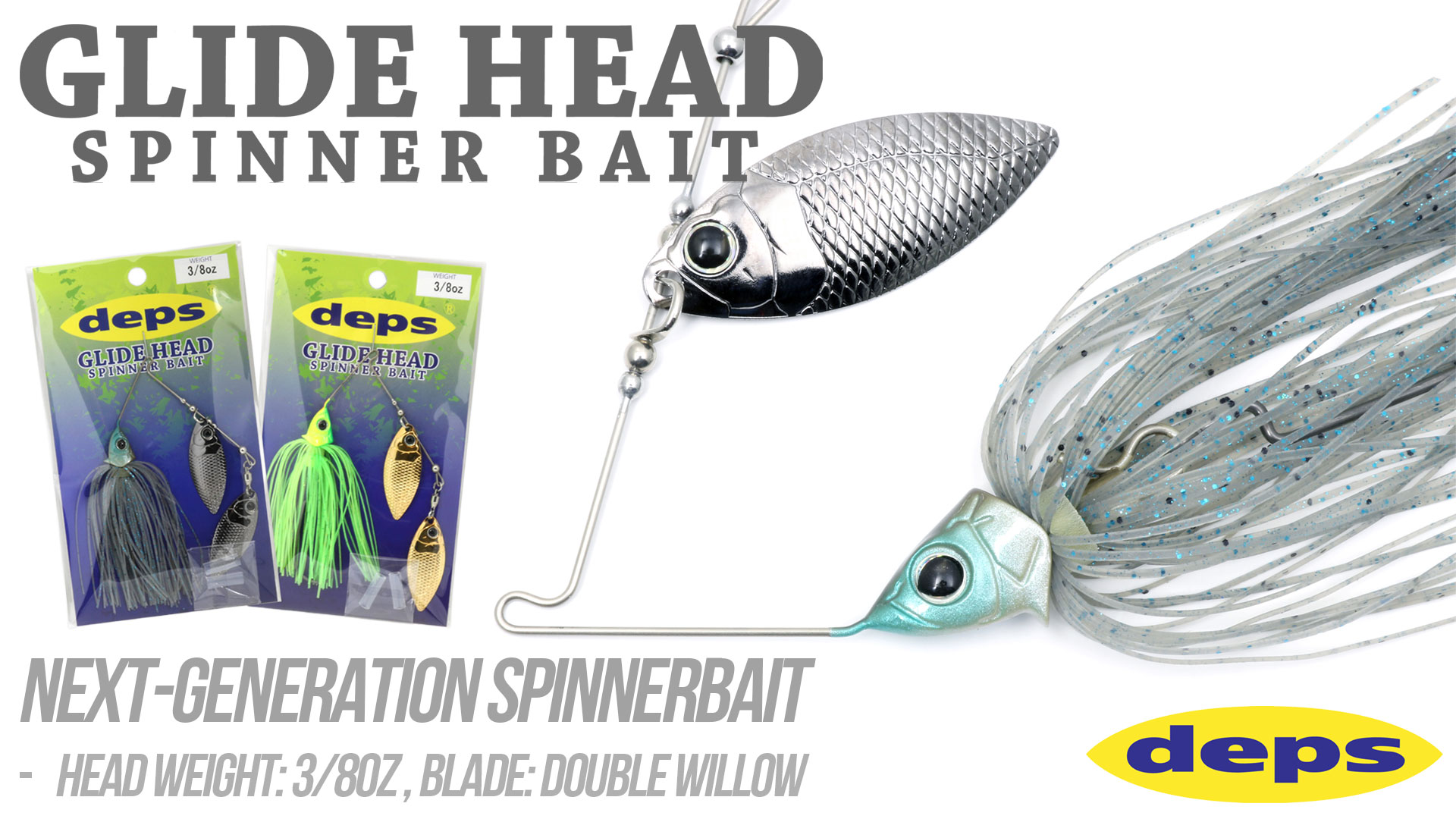There are hundreds of ways to catch a bass, and that is part of what makes bass fishing great. Techniques are continually evolving as bass anglers discover new ways to fool their favorite fish. One technique you may not have heard of is called “freestyling,” a technique Bassmaster Elite Series pro Paul Mueller relies on to catch finicky bass.
What is Freestyling?
The technique involves a light jighead and a 3” or 3.5” Reins Bubbling Shaker. It is fished slowly above the fish and excels in tough conditions like ultra-cold water and during the post-spawn.
“It’s called “freestyling” because you can do it at any depth. It is like a drop-shot rig that isn’t fixed on a line. When you lift a drop-shot up or down the fish sometimes lose interest,” says Mueller who perfected the rig based on his experiences ice fishing. “The bait is constantly hovering above the fish, and it does not hit bottom. You can lift it up and down and drop it right on the nose of fish you see on your electronics.”

There are similar jighead and plastic rigs such as the “Damiki Rig” that are gaining in popularity, but Mueller stresses that they are not the same technique. “Many of them use a small fluke-style bait and a 3/8 or ½-ounce jighead. Freestyling is using a micro finesse worm like the Bubbling Shaker and light jighead that flows through the water better,” he says. “It can also be fished both shallow and deep and throughout the year. There are so many applications for it.”
Where to Use It
While Mueller discovered this approach ice fishing, he says it is just as effective on open water. His initial experience was that suspended bass are looking up to feed and when in a negative mood they often do not want to chase a lure to the bottom.
“It can be done anytime you are watching your electronics and seeing suspended bass. It also works great along weedlines and also when bass are finicky right after spawning,” he believes and says that it is a solid option when the bass will not chase moving baits. “There are only a handful of techniques that will work when the water is really cold, and this is one of them. It’s the same when it is extremely hot, and the fish are lethargic.”

While suspended fish are prime targets for freestyling, the technique also works when bass are hunkered down on the bottom. Mueller adds that this technique is not just for bass fishing and will work for just about any species of bass. “I’ve caught trout, pike, crappie, perch, you name it doing this,” he says.
Plastics and Jigheads
The Bubbling Shaker is Mueller’s go-to, but in tough fishing situations or extremely cold weather, he likes the bite-sized 1 ¾” Reins Rockvibe Shaker.
He uses a variety of different jigheads and it all comes down to how the fish are acting “For the 3\” Bubbling Shaker I like a 1/13-ounce Zappu Cocho Cocho head. For the 3.5” I like the Cocho Cocho Plus or Reins Tungsten Cover Jig Head when I am fishing around cover. The Cocho Cocho Plus has too big of a hook for the 3” Shaker and the bait won’t rig correctly on them, so I use it for the 3.5” Bubbling Shaker,” he adds.

Mueller also uses a handmade Freestyle Jig made from a Do-It Mold. They are available in 3/16 ounce up to a ½ ounce size. “If the fish are more aggressive I like to use these heavier sizes so I can get the bait in front of them quickly. These heads are perfect for a 3.5” Bubbling Shaker,” says Mueller. He said the technique is very versatile and by changing your weight size you can cover many situations.
Boat Positioning and Electronics
The technique is highly dependent on your electronics and visually seeing bass suspend and then inspect your bait. Mueller says boat positioning is critical. “The deal with this technique is to always keep your boat above the fish,” he says.
Once a fish is located on the graph, drop the bait to the fish and watch to see how it interacts. “Each fish is different. Some you see come up and eat it, and sometimes they will stay in the same place,” says Mueller who will continue to watch the graph for any change in how the bass are acting. “I like to watch on my Garmin Panoptix Livescope, and if I see a fish coming, I’ll give it a quick pause. The constant shaking of the rod provides the bait with a quivering action; it looks like nothing else we bass anglers do.
There is no wrong place to try this technique as long as you can see bass on the graph. “I’ll fish it down to 45-feet, but there are times when it is 60-feet of water, and the bass will be suspended at 30-feet. That is an excellent time to use this technique, but not the only time I do it.”
Working the Bait
While it may seem like an eternity for the bait to fall,that is part of the appeal to this technique. Patience is a key, and Mueller feels that it works best for fish in a negative mood.
“The bait is constantly hovering above the fish, and it does not hit the bottom. You can lift it up and down and drop it right on the nose of fish you see on your electronics,” begins Mueller who has perfected the pattern to work when nothing else will. “I like to fish it with a constant shake. I do not stop it; I’ll raise it up and down but will keep shaking as I am doing it.”
Rod, Reel, and Line
With a finesse technique like this, the right gear is essential. Mueller uses a Dobyns Champion 682, which is a 6\’8\” medium light spinning rod. He pairs it with a Lew\’s Team Pro Speed Spin reel in the 1000 size. The smaller reel is a benefit for this technique especially with the light line he prefers, 5-pound Gamma Touch fluorocarbon.

Color Selection
Many colors of the Bubbling Shaker will work with this technique, and Mueller has a few favorites depending on what the fish are feeding on as well as light conditions. When the bass are keying on perch or bluegill, Gold Legend or Green Pumpkin Silver are his top choices.
For shad eaters, Mueller uses the Kito Kito Shad color as well as the Bluegill pattern because of the flash it emits. Overcast conditions and lowlight times of day are when he switches to a glow color like UV SuperGlow.
Freestyling is a technique that shines when the fishing gets tough. Utilizing your electronics to locate inactive bass and then patiently waiting for the bait to fall can save the day when fishing gets tough.





